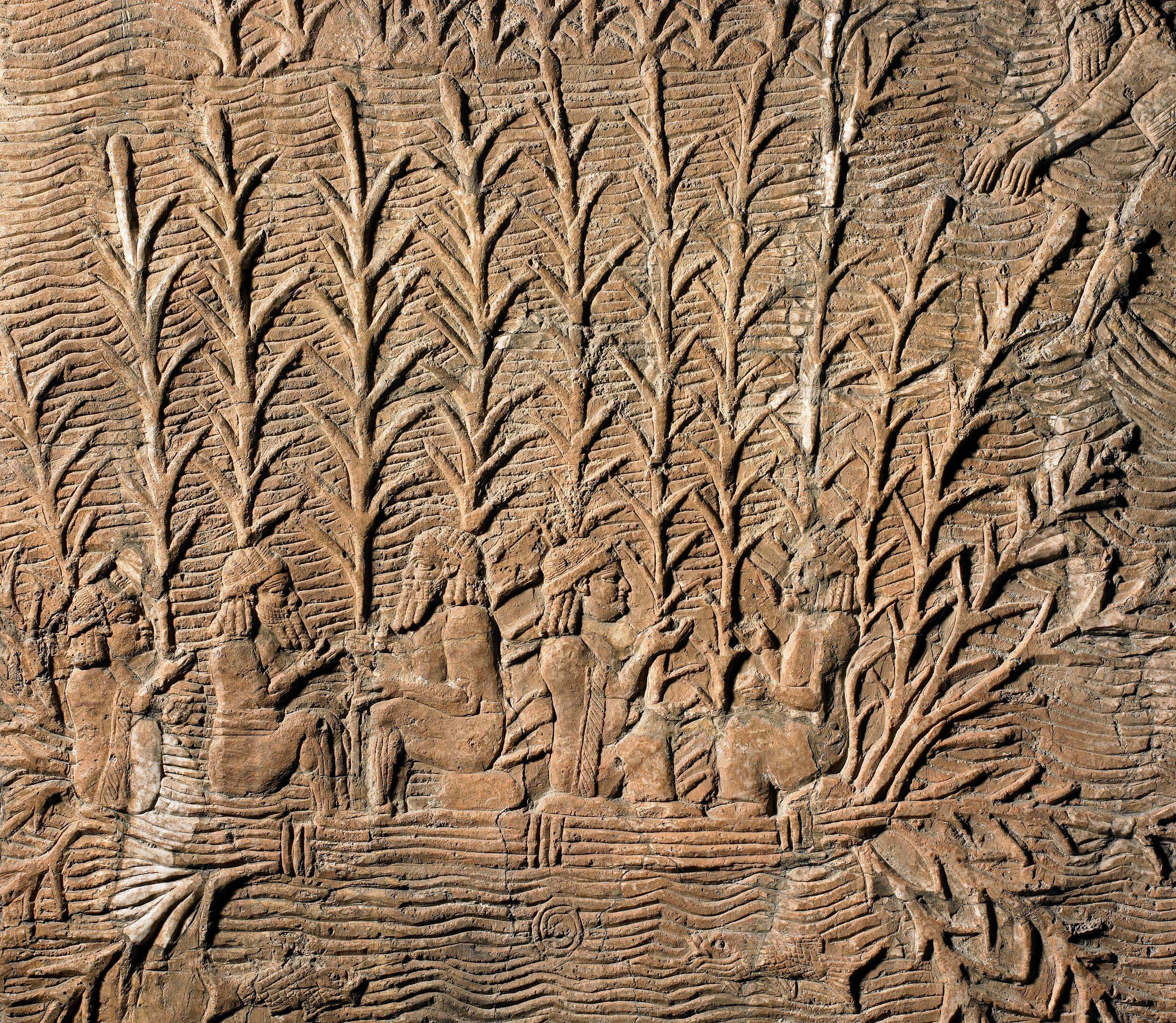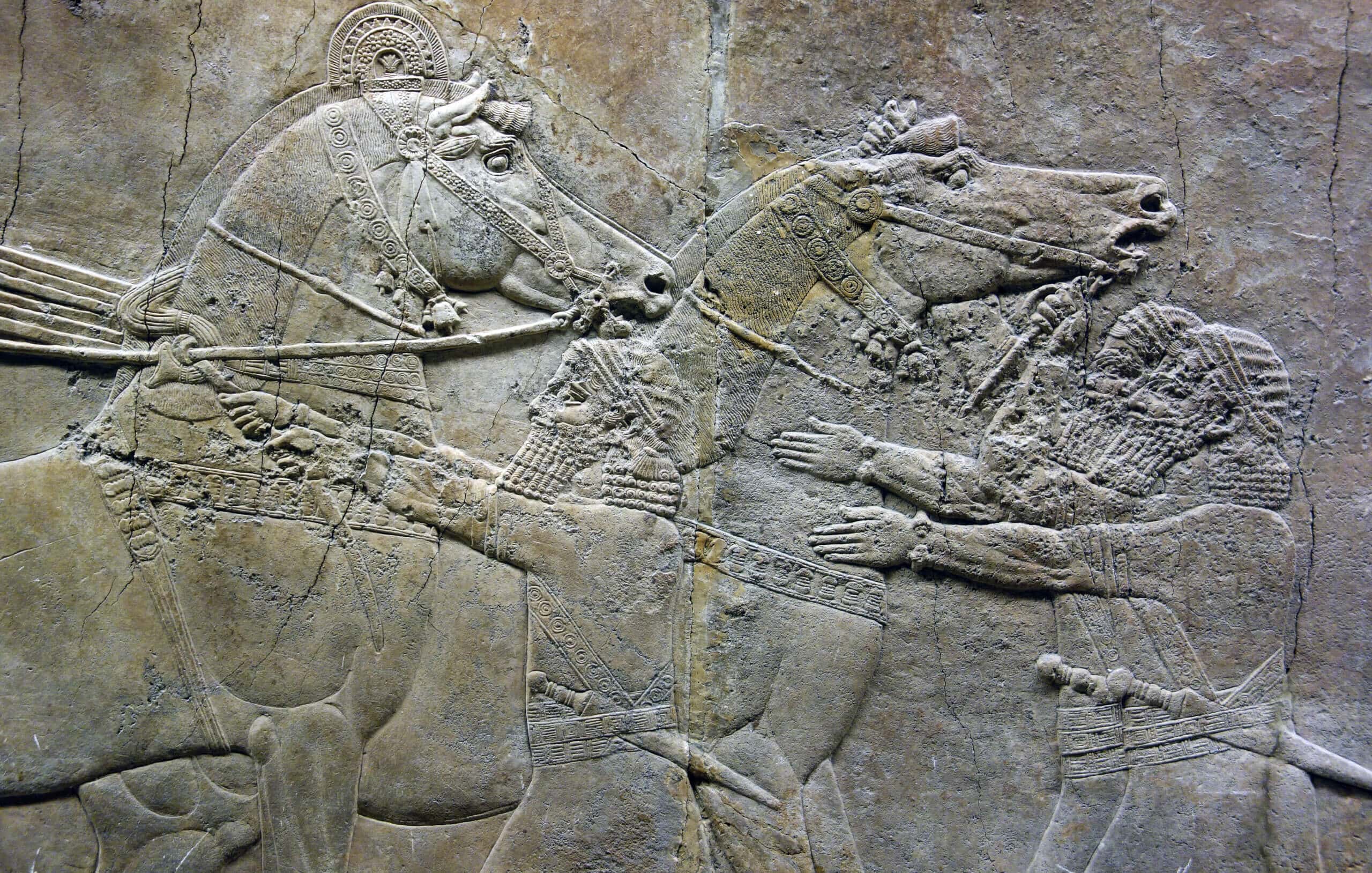New findings from excavations at sites in the city of Mosul in Iraq that were destroyed by the Islamic State organization shed additional light on the short-lived greatness of Nineveh, the capital of Assyria
By Martin Worthington, Trinity College Dublin

Archaeologists in northern Iraq, excavated at the Meshki and Adad Gate sites in Mosul Which were destroyed by the Islamic State in 2016, recently revealed 2,700-year-old Assyrian reliefs. These rock carvings, which include war scenes and trees, add to the abundance of detailed stone tablets excavated from the 40s onwards, many of which are now held in the museum the British. They come from the ancient city of Nineveh, which for a time was probably the most glittering place in the world.
There is evidence of occupation at the site as early as 3,000 BC, a period known as Late Uruk period. But under the king Sennacherib (705-681 BC), son of Sargon and grandfather of Ashurbanipal, Nineveh became the capital of Assyria, the greatest power of its time.
In moving the capital to Nineveh, Sennacherib did nothing new. Traditionally, the Assyrian capital was Assyria (from which we derive the word "Assyria"), but in the 800s BC the political capital was moved to Kalhu (Nimrod). Sennacherib's father, Sargon, then built himself a completely new capital city, Dor Shrokin.
Such initiatives presented the king's authority, making a clear claim to a new order of things. They were also used to remove The center of power from the elite families whose influence accumulated over time.
But such moves could ignite a fire. Sargon died on the battlefield and his body was never found. This national disaster was apparently a major factor that led his successor, Sennacherib, to abandon the city that had just been founded by his father and mark his greatness elsewhere.
So it was that Nineveh became synonymous with Assyrian power. When it subsequently fell to a coalition of Babylonians and Medes in 612 BC, the Israelites prophets, whose kingdoms had suffered greatly under Assyrian aggression, could not contain their enthusiasm.
The fall of Nineveh
The biblical book of Nahum contains an extensive prophecy (although written after the event) about the fall of Nineveh. The book of Jonah, meanwhile, tells that Jonah was sent to that city to warn the inhabitants of the dire consequences of their corruption.
Sennacherib knew nothing of the future. He decided to make his city as magnificent as he could, and surrounded it with a huge wall, the outline of which can still be seen at a glance aerial. To be precise, the city limits were surrounded by warp Walls, one inner and one outer, together delimit an area of more than seven square kilometers.
Both walls accepted Names - "The wall that scares covers the enemy" and "The wall that scares evil" - in Sumerian. They had 18 monumental entrances, including the Meshki and Adad gates. In the last days of the city, around 612 BC, these gates were hastily reduced in an attempt to make them more defensive. As iconic parts of the Old City, the walls and gates were attacked by the Islamic State (Daesh) in 2014.
In antiquity, the urban landscape was dominated by the mounds of Koyunjik (a name coined in the Ottoman period, probably from Koyunchuk The Turk or the "little sheep") and Nebi Yunus. These landforms, which are up to 30 m high, were inhabited temples and palaces Ancient Assyrians.
Nabi Yunus, according to Muslim tradition, contains the tomb of the prophet Jonah. Koyunjik is where Ashurbanipal assembled the The pegboard directory His. Excavated between the 40s and 19s, the site is arguably our most important source for our modern understanding of ancient Mesopotamian culture.
the addresses of Sennacherib on clay prisms boast that the city's beauty also included magnificent gardens. Assurologist Stephanie Daly, in her book "The Mystery of the Hanging Garden of Babylon" from 2015, hypothesizes that these were the true source of the reports of the Hanging Gardens of Babylon, meaning the Greeks confused one Mesopotamian city with another.
Wealthy private citizens could to hold Gardens within the city, and all its gardens could be enjoyed verifies Aqueduct built by Sennacherib to bring water from the Humel River to the Ḫosr River. This is the only construction of this type known from before the Roman period.
The basic methods of Nineveh's first diggers, such as the 19th century British adventurer Austen Henry Layard, could reveal vast areas, but they largely concentrated on monumental buildings. They were also nothing more than a treasure hunt without detailed documentation, thus destroying valuable information beyond repair.

Contemporary excavations are more careful and thorough, which also makes them slower. As a result, most of Nineveh remained unexcavated. In particular, we know little about the "lower city" below the two mounds, where ordinary people lived. Much of it lies beneath modern Mosul, and a vast amount remains to be rediscovered.
Written sources, however, give a glimpse of how the place was most likely bustling and prosperous. Historian Mario Livrani, in his book "The Ancient Near East" from 2013, Appreciate that the population of the city under Sennacherib was about 100,000.
Assyrian royal inscriptions often emphasize the violent side of the empire, such as when Ashurbanipal Reports that he was a rebel liaison in the Citadel of Nineveh along with a bear and a dog (fortunately he did not provide further details). but equally were It has markets and artisans, deities and festivals.
Such was the reputation of this ancient city that when explorers in the mid-19th century found the remains of magnificent cities near Mosul - which we now know to be Dor Shrokin and Qalau - they published their findings under the headings The Nineveh Monument and Nineveh and its remains. They assumed that what they found must belong to Nineveh, when it did not.
For an article in The Conversation
More of the topic in Hayadan:

13 תגובות
A person who in an angry manner against our Torah and insults it and expresses his opinion as to whether he is inclined to do bre mila at all in our day is a person who will misrepresent facts and sow shards of shards against Judaism and it is a shame that there are still people who act with malice and malice and disdain against the Jewish religion.
This thing proves the necessity of peace. The Bible as a whole proves how human we all are.. and that people who want to be tyrants in the world must be stopped.. Archeology unites us all and so does the Bible.. Judaism, Islam and Christianity must unite under the peace of God.. must
There is no such thing as a dead end.
These are two different plants. One bought. And the other end
Dr. Yachiam Sorek whistles. It is a shame that a learned person like you has reflexively joined the next nationalist academic zeitgeist to diminish the Bible as a historical source, in order to undermine and doubt the connection of the Jewish people to their country. This was never the purpose of the Bible as you yourself stated. Various findings, and most recently the relief from Mount Ibal, establish chronological meeting points between history and the biblical story and scientifically prove Jewish history.
The question of whether Nahum the prophet was a prophet or a liar who wrote after him, is not relevant to the article, and should not be included as a passing remark by Knaf in this article. To me as a religious person, this casual disrespect is not respectful and greatly reduces my ability to know whether the writer is writing facts in the entire article or his and others' private feelings and beliefs.
The next city is Deir Sharohan, it's a shame to trust the English transliteration. Dir (from the word dirah, housing) is used today in Arabic for a church.
Hello Nehumologist. Allow me to support your borrowed assumption. As a researcher of ancient Hebrew/Jewish history, I allow myself to assume with almost complete certainty that most of the Bible is tainted with chronological projections. The Bible underwent substantial and fundamental changes over the years until it reached a one-sided wording rule, priestly of course. Most of it is built on the wires of excessive assumptions that are nothing but a reflection of a well-orientated historiological and historiographical reality, from "higher", in terms of what I would ex-cathedra lecture in the cynical form of: "to write today in yesterday's newspaper what will be tomorrow". Juxtaposing the biblical writings with reliable archeological findings indicates only fragments of reality. The Bible was well rewritten to serve late politics
Of course - "Walshtia". And if I make a cynical joke, I will refer to the lies of the Bible as "the best song is a lie..."
Hello Nahumologist. Allow me to support your skeptical comment and add more and more. From my biblical research in the presence of archeology and history in general, it turned out that only a few biblical testimonies have scientific historical confirmation. Most of them were written late, even very late in order to serve family, tribal and personal interests. In my academic lectures, I would allow myself to joke in the above context and point out that this is similar to "writing today in yesterday's newspaper what will be tomorrow" and enough for Hakima in Ramiza... and Tia in Kurmiza...
It is written that the capital moved from the city of Assyria to the city of Kalahu: the name is Kalah, not /Kalhu/. On a scientific website it is appropriate to be precise (and not disrupt the English transcription)
By the way, it is worth paying attention both to the quality of the display and, more than that, to the amazing accuracy regarding the facial expressions of the battle horses during "action".
It is amazing how an ancient power like the Assyrian one, well understood the power of training horses and harnessing them, literal and ambiguous for war journeys and battles near and far, including harnessing pairs of horses and quartets for battle moves, and it is no wonder that this power was able to exterminate many nations and armies at its feet. And it will not be or will seem easy to the reader for a thousand horses for combat activities and the Bible, by the way, knew how to appreciate moves like these.
Why do you think Nahum's prophecy was written after the destruction of Nineveh? How can such a thing be determined?